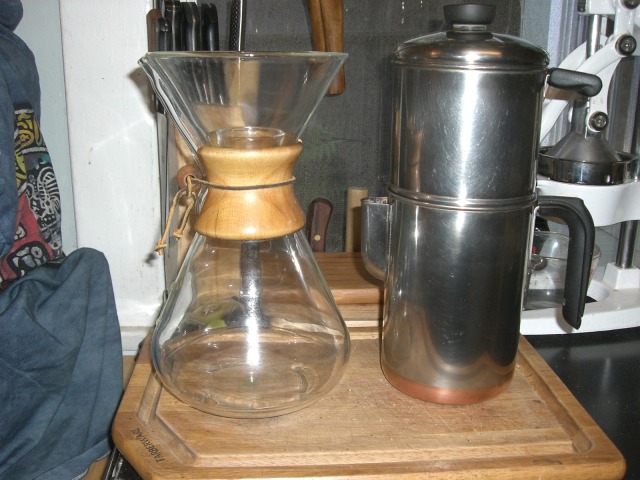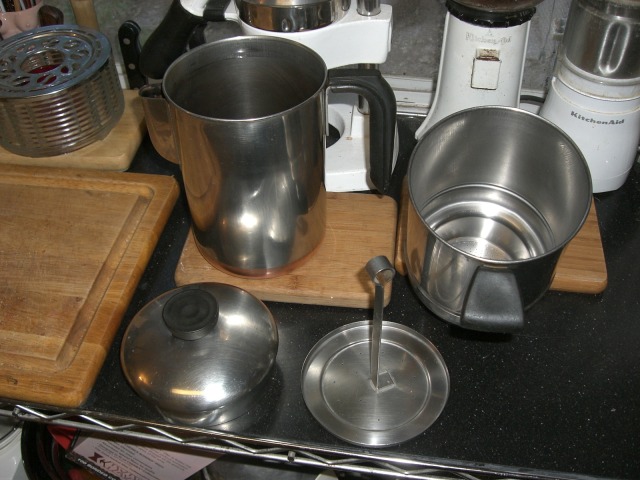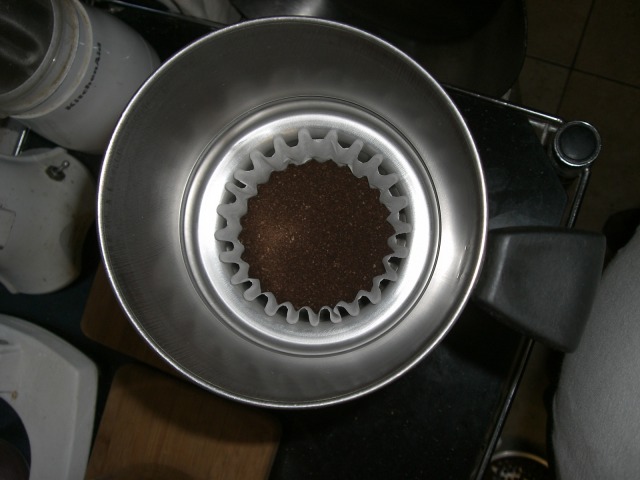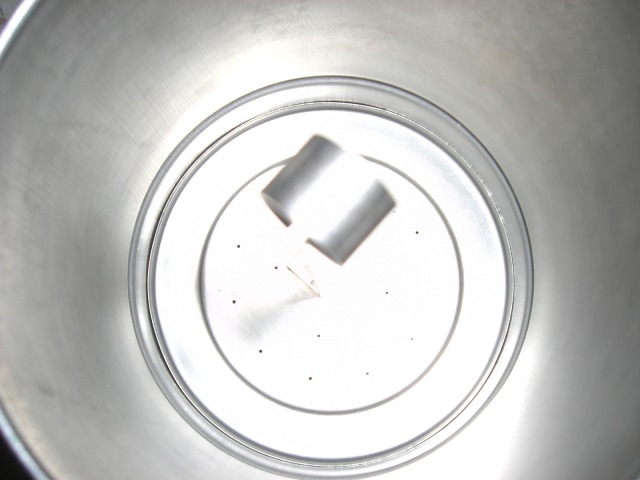OK, let's see if Dr. Technical can do this...first pic is the dripolator, disassembled. There is a pot, a water reservoir, a regulator plate and a lid.
Next, the reservoir, with basket filter and coffee grounds in place.
Then, the regulator plate in place.
Last picture, the assembled 8 cup Revere Ware Dripolator and a 13 cup hand blown Chemex.

The Chemex takes multiple pours from a kettle for best brew, the dripolator has a fixed reservoir, so it's just one pour. Both are designed for optimal brew time, and I like them both. Even better, they both make consistently excellent coffee. I didn't take pix of my kettles, but I use a glass whistler that has cup markings on it for the Chemex and I have a large old Revere Ware whistler for the dripolator. I have a piece of stainless steel that looks like a choreboy scrubber rolled into a short cylinder that fits through the spout of the Revere kettle. Minerals in the water bind to it and I remove it once in a while and roll it between my hands to break the deposits loose, rinse and put back into the kettle. The dripolator has also been on numerous camping trips. It is probably older than I am, and I'll be 60 in a week. The glass object in the neck of the Chemex is a Hornitos Tequila shot glass, shaped like a horn. It makes a good lid and only cost a quarter.

 The biggest thing, I think, is that with a separate kettle and a pour-over brewer, I can control all the elements listed, and none of them get left to the whims or shortcomings of an electrical appliance that can accumulate mineral scale or decide to change its mind about water temperature or brew time.
The biggest thing, I think, is that with a separate kettle and a pour-over brewer, I can control all the elements listed, and none of them get left to the whims or shortcomings of an electrical appliance that can accumulate mineral scale or decide to change its mind about water temperature or brew time. Their advantage over cone filters is the size of the water reservoir and the regulator plate above the basket. Makes it a single pour operation. Of course, I have yet to see a dripolator, even a Revere, as pretty as a Chemex. I should probably post pix of the two, side by side. A real right brain v. left brain example of coffee brewing.
Their advantage over cone filters is the size of the water reservoir and the regulator plate above the basket. Makes it a single pour operation. Of course, I have yet to see a dripolator, even a Revere, as pretty as a Chemex. I should probably post pix of the two, side by side. A real right brain v. left brain example of coffee brewing.


